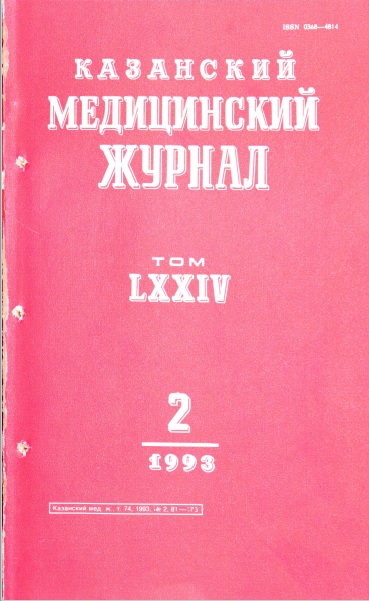Вызванные ответы короткого абдуктора I пальца кисти после оперативного восстановления нервов предплечья
- Авторы: Плещинский И.Н.1, Романова И.Р.1, Тихвинская Т.И.1
-
Учреждения:
- Научно-исследовательский центр Татарстана «Восстановительная травматология и ортопедия»
- Выпуск: Том 74, № 2 (1993)
- Страницы: 142-144
- Раздел: Статьи
- Статья получена: 04.04.2021
- Статья одобрена: 04.04.2021
- Статья опубликована: 15.04.1993
- URL: https://kazanmedjournal.ru/kazanmedj/article/view/64645
- DOI: https://doi.org/10.17816/kazmj64645
- ID: 64645
Цитировать
Полный текст
Аннотация
Известно, что у взрослых здоровых людей в мышцах кисти Н-ответ в большинстве случаев не обнаруживается. В этих мышцах регистрируется F-волна, сходная с Н-ответом по латентности и форме, но имеющая иное происхождение. F-волна считается ответом мотонейронов на антидромный сигнал, пришедший в спинной мозг по их аксонам. Н-рефлекс мышц кисти и стопы встречается у больных с различными поражениями ЦИС, что указывает на функциональный тт А характер причин отсутствия Н-ответа J в норме. Механизмом тонического торможения Н-ответа может быть супраспинальный пресинаптичёский контроль. Облегчение Н-ответа может, следовательно, иметь причиной уменьшение супраспинальных ограничений рефлекторной возбудимости двигательных центров.
Ключевые слова
Полный текст
Об авторах
И. Н. Плещинский
Научно-исследовательский центр Татарстана «Восстановительная травматология и ортопедия»
Автор, ответственный за переписку.
Email: info@eco-vector.com
Россия
И. Р. Романова
Научно-исследовательский центр Татарстана «Восстановительная травматология и ортопедия»
Email: info@eco-vector.com
Россия
Т. И. Тихвинская
Научно-исследовательский центр Татарстана «Восстановительная травматология и ортопедия»
Email: info@eco-vector.com
Россия
Список литературы
- Верник А. Я, Журн. невропатол. и психиатр.—1980 —№ 3.—С. 338.
- Персон Р. С. Спинальные механизмы управления мышечным сокращением —М., 1985.
- Delvaide Р. J. New develop, electromyogr. and clin. neurophysioL—Basel.— 1973.—Vol. 3. P. 508—522.
- Siafakas A., Panayiotopoulos C. D., Scarpalezos S. Electromyogr. and clin. neurophysiol.— 1982.— Vol. 22.— P. 55—64.
- Toku Mashiko. Electromyorg. and clin. neurophysiol.— 1984.—Vol. 24.—P. 331—339.
Дополнительные файлы







